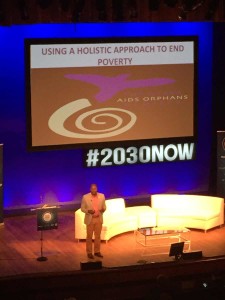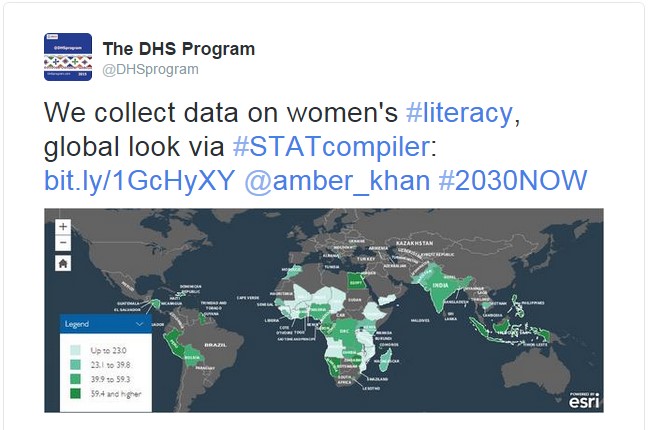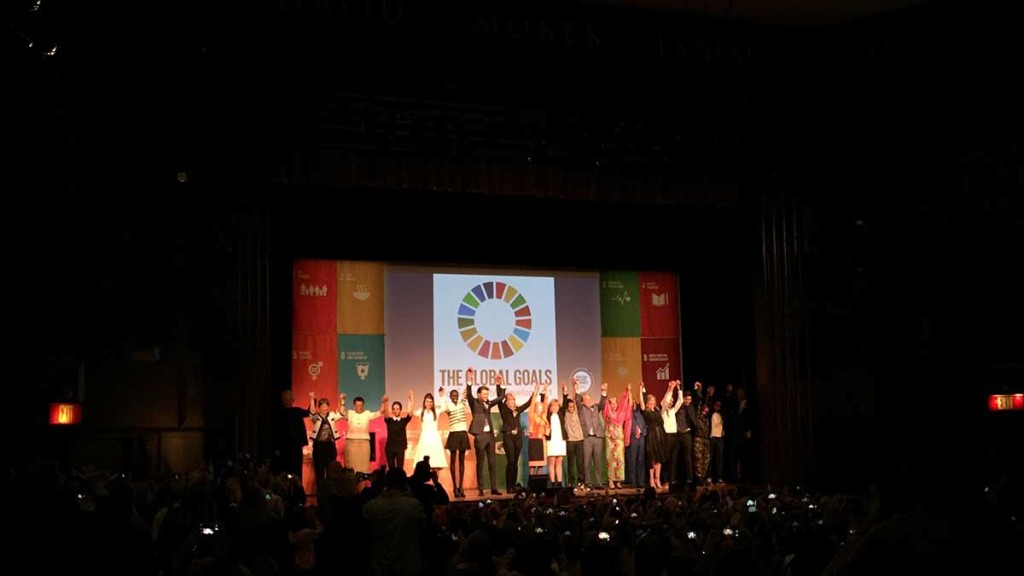Social Good Summit 2015: Celebrating the New Sustainable Development Goals

It’s that time of year again! The end of September marked the UN General Assembly and the Social Good Summit, the latter of which we attended this year (read about our trip last year). We were witness to a remarkable group of speakers, including UN Secretary-General’s Special Advisor Amina J. Mohammed, Executive Director of UNFPA Babatunde Osotimehin, and former U.S. Secretary of State Madeleine Albright – just to name a few.
We listened to compelling (and at times, heart-wrenching) stories about children, women and girls, and refugees, and heard appeals for gender equality, greater efforts for climate control, and improved funding for and access to education. We were also shown numerous examples of how technology has the potential to aid all of the above. This year’s summit was especially important and relevant to The DHS Program because of the recent adoption of the Sustainable Development Goals (SDGs) during the UN Sustainable Development Summit 2015.
The SDGs replace the Millennium Development Goals (MDGs), which guided poverty reduction, health, education, and equality initiatives from 2000 through 2015. The SDGs that follow aim not only to continue efforts, but to broaden them. Where there were 8 MDGs, there are 17 SDGs with 169 targets. The SDGs are “action oriented,” “universally applicable,” and “take into account different national realities, capacities, and levels of development,” building on the MDGs before them.
The DHS Program supported the measurement of the MDGs initiatives, and our data currently include indicators that will contribute to the monitoring of several SDGs:
- Zero Hunger: End hunger, achieve food security and improved nutrition and promote sustainable agriculture.
- DHS surveys provide data on stunting, wasting, and underweight in children, as well as women’s nutritional status. Surveys also provide information on vitamin deficiency and diversity of diet.
- Good Health and Well-being: Ensure healthy lives and promote well-being for all at all ages.
- DHS surveys monitor maternal and child mortality, reproductive and child health, family planning, malaria, HIV, and much more.
- Quality Education: Ensure inclusive and equitable quality education and promote lifelong learning opportunities for all.
- DHS surveys capture information about the education and literacy of household members.
- Gender Equality: Achieve gender equality and empower all women and girls.
- DHS data look at many women’s status indicators, including female genital cutting, domestic violence, child marriage, and access to education and other resources.
- Clean Water and Sanitation: Ensure availability and sustainable management of water and sanitation for all.
- DHS surveys include data on household drinking water and sanitation facilities.
Throughout the summit, many speakers emphasized data’s key role in monitoring the SDGs and impact on social good:
“Data is at the heart of the SDG agenda.” — Ricardo Fuentes, Executive Director of Oxfam Mexico
“Data is the lifeblood of decision making & key component of SDGs.” — Haile Owusu, Chief Data Scientist at Mashable
“Let’s take data and make it useful for social good”. — Shamina Singh, Executive Director of MasterCard Center for Inclusive Growth
We strongly identify with Target 17.18 to “enhance capacity-building support to developing countries”, and to “increase the availability of high-quality, timely and reliable” disaggregated data. As always, the collection of DHS data is part of a capacity strengthening process. And while DHS surveys aren’t designed to capture all of the SDG targets or each detail, the skills learned through survey implementation – data collection, processing, analysis, and use – contribute to international capacity towards achieving these goals, thus enabling social good!
References:
https://sustainabledevelopment.un.org/topics
https://sustainabledevelopment.un.org/focussdgs.html




